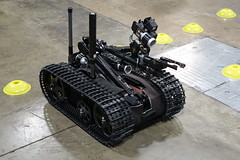The only thing worse than no automation
January 03, 2017 in digital music by Dan Gravell

The only thing worse than no automation is automation gone wrong.
The main reason for that is that automation gone wrong can take a lot of effort to fix. Indeed; sometimes errant automation can completely tear apart a music library. Luckily, using backups you can usually rectify this pretty simply.
What could possibly go wrong?
The effects of automation gone wrong are normally pretty clear. Files or folders renamed en masse in a manner which you aren't happy with; tag fields overwritten or destroyed; or sometimes even entire music files deleted.
In some ways, that's the best case. At least you know there's a problem. What if the effects of bad automation are not clear? It can take sometime to find the problem, and by that time it can make some solutions, such as restoring from backup, more problematic. That's because you might have made other changes, e.g. adding music, which you then have to perform again, if the restore overwrites these changes.
We can apply the notions of validation and verification to this. Validation is making sure the automation is doing what you actually require. For example, you don't want music files to have artwork embedded that your music player will not display. Verification is assuring that when the automation proceeds it is doing so in a manner that satisfied the requirement for album artwork, say. It might provide the correct album art size and format, say, but what if the lookup was incorrect, and the wrong artwork entirely was inserted?
Verification problems can be further expanded as I discussed in a previous post. These problems might be:
- Where a fix cannot be deterministically and objectively determined, the result may be incorrect.
- The quality of the information source may mean the wrong data is used to make a fix.
- The original data used to lookup information may be incorrect, and so the lookup inevitably is incorrect.
Fixing bad automation

Your ultimate backstop are backups. You simply must have backups. If you don't, stop reading this and start a backup.
If you're lucky, and you have used software to perform some change which went beyond what you wanted, there may be an "undo" feature to back out these changes.
But such features are limited - if further changes have occurred following the action then the effects can be hard to predict. Backups are the way forward.
Automation and bliss
Automation gone wrong is worse than no automation. That's always been one of the guiding principles behind how bliss works.
I can understand why sometimes I get frustrated emails asking why a given feature cannot be automated in bliss. In many cases the answer is that they can be automated, it's just that it hasn't been due to either (1) the feature is immature and we're testing it manually first or (2) there just hasn't been enough demand to automate it yet.
This is another reason I added the Fix all visible feature; not full automation, but think of it as semi-automated fixing.
But generally speaking, the aim of bliss is to allow full automation, and that's what I strive for, knowing many of you have massive music collections for which manual fixing isn't an option.
Thanks to futureatlas.com and mitchell haindfield for the image above.

